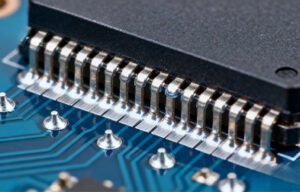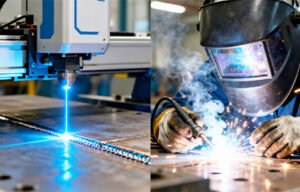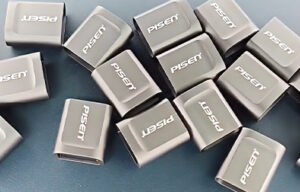What Is the Real Cost of a Laser Welding Machine? Is It Worth the Investment?
1. Introduction
Laser welding has rapidly become a popular joining technology in modern manufacturing. Whether you’re in the automotive, electronics, jewelry, or kitchen appliance industry, the question is the same: What is the real cost of a laser welding machine, and is it worth the investment?
This article provides a deep dive into the pricing, ongoing costs, and returns of laser welding systems, helping you make an informed decision for your business.
2. Understanding the Base Cost of a Laser Welding Machine
The upfront purchase price of a laser welding machine can vary dramatically based on machine type, configuration, and brand. On average:
Handheld fiber laser welding machines range from 3000 to 10000 USD.
Mid-range platform fiber laser welders can cost between 10000 and 30000 USD.
Fully automated laser welding systems may cost 50000 USD and up.
This base cost is just the beginning. To fully understand your investment, it is crucial to look beyond the purchase price.
3. Factors That Affect the Price of Laser Welders
Type of Laser Welding Technology
There are several laser welding technologies, including:
Fiber laser welding (most popular due to stability and cost-efficiency)
CO2 laser welding (used less often now due to size and cost)
MOPA laser welding (for high-precision or dissimilar metal welding)
Power Output and Laser Source
Laser power—measured in watts—greatly impacts both performance and price. For example:
1000W systems are ideal for thin metal welding
1500W to 2000W machines are suited for general industrial use
3000W+ systems handle thick metals and high-speed welding
Automation Level
Manual, semi-automatic, and fully automated systems have vastly different costs. Automation boosts efficiency but raises the initial investment.
Accessories and Consumables
Cooling systems, protective gas nozzles, wire feeders, and laser heads all add to the final quote.
4. Hidden and Ongoing Costs
Energy Consumption
Laser welders are typically more energy-efficient than traditional welding systems, but they still consume power, especially at high wattages.
Maintenance and Repairs
While fiber lasers are low-maintenance, occasional servicing, lens cleaning, and system calibration are needed.
Training and Labor Costs
Although handheld laser welders are easy to operate, some initial training is necessary, especially for high-precision industrial applications.
Spare Parts and Gas Supply
Shielding gases like argon or nitrogen are essential in certain applications. Though the consumption is minimal, it’s a recurring cost.
5. Price Range by Machine Type
| Machine Type | Typical Cost Range | Ideal For |
|---|---|---|
| Handheld Fiber Laser Welder | 3000 – 10000 USD | Small factories, repairs |
| Platform Fiber Laser Welding Machine | 10000 – 30000 USD | Medium-scale manufacturing |
| Fully Automated Welding Cell | 50000+ USD | Automotive, aerospace, and high-output industries |
6. Comparing Laser Welding with Traditional Welding Methods
| Feature | Laser Welding | Traditional Welding |
|---|---|---|
| Speed | Fast | Slower |
| Precision | High | Moderate |
| Heat-Affected Zone | Small | Large |
| Material Deformation | Minimal | Common |
| Labor Dependence | Lower | Higher |
| Rework | Rare | Frequent |
Despite the higher initial investment, laser welding often reduces operational costs long-term due to efficiency and quality.
7. Return on Investment (ROI) Analysis
Cost Per Weld
Laser welding can reduce cost per weld by up to 50% compared to TIG or MIG welding, thanks to higher speeds and reduced rework.
Productivity and Labor Efficiency
One trained operator can handle multiple welding tasks, especially with semi-automated or robotic setups.
Reduction in Rework and Waste
Laser welding produces clean, precise welds, significantly minimizing post-processing and waste material.
8. Case Study: Real Cost Breakdown of a 1500W Fiber Laser Welding Machine
Let’s break down the typical total cost for a 1500W fiber laser welder over 5 years:
| Category | Estimated Cost (USD) |
|---|---|
| Machine Purchase | 12000 |
| Energy Consumption | 1500 |
| Maintenance | 800 |
| Training & Setup | 500 |
| Spare Parts & Gas | 1000 |
| Total Cost | 15800 |
Assuming this machine operates 250 days/year and performs 200 welds per day, the cost per weld is approximately 0.13 USD, which is highly competitive.
9. Is It Worth the Investment?
Yes—laser welding machines are a smart long-term investment for most manufacturers due to:
Increased productivity
Lower operating costs
Higher product quality
Competitive differentiation
Especially for businesses that rely on precision, speed, and material versatility, laser welding delivers significant value.
10. Tips for Making a Smart Purchase Decision
Evaluate your production volume and materials before choosing a model
Select a reliable manufacturer with strong technical support
Ask about warranty and after-sales service
Consider energy efficiency and safety features
Calculate the payback period based on projected use
11. Conclusion
Understanding the real cost of a laser welding machine goes beyond its sticker price. When considering purchase, think holistically—include energy, maintenance, labor, and productivity gains. For many industries, laser welding is not just a purchase, it is a strategic investment that delivers long-term value and competitive advantage.
111-1024x458.png)


